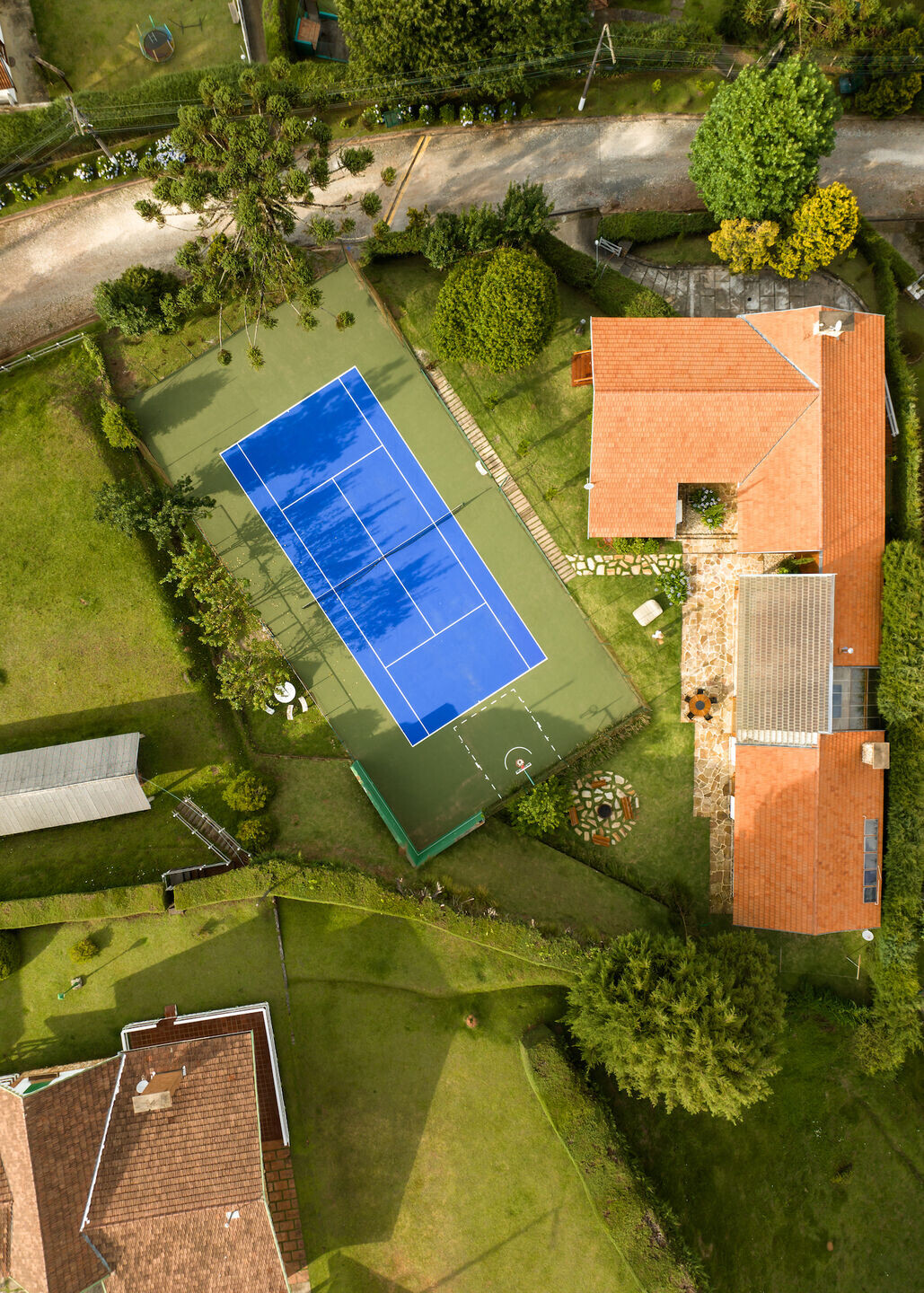With the aim of renewing an old country house, the project for Capivari House Extension, located in Campos do Jordão-SP, Brazil, and signed by VAGA Architecture office, stands out for its unique approach to transformation, through the attachment of a structure annexed to the original residence, which redefines the experience of living and coexisting.
The architects' idea was to create an intervention with a contemporary language, establishing a respectful dialogue with the original architecture of the residence and proposing new living spaces.
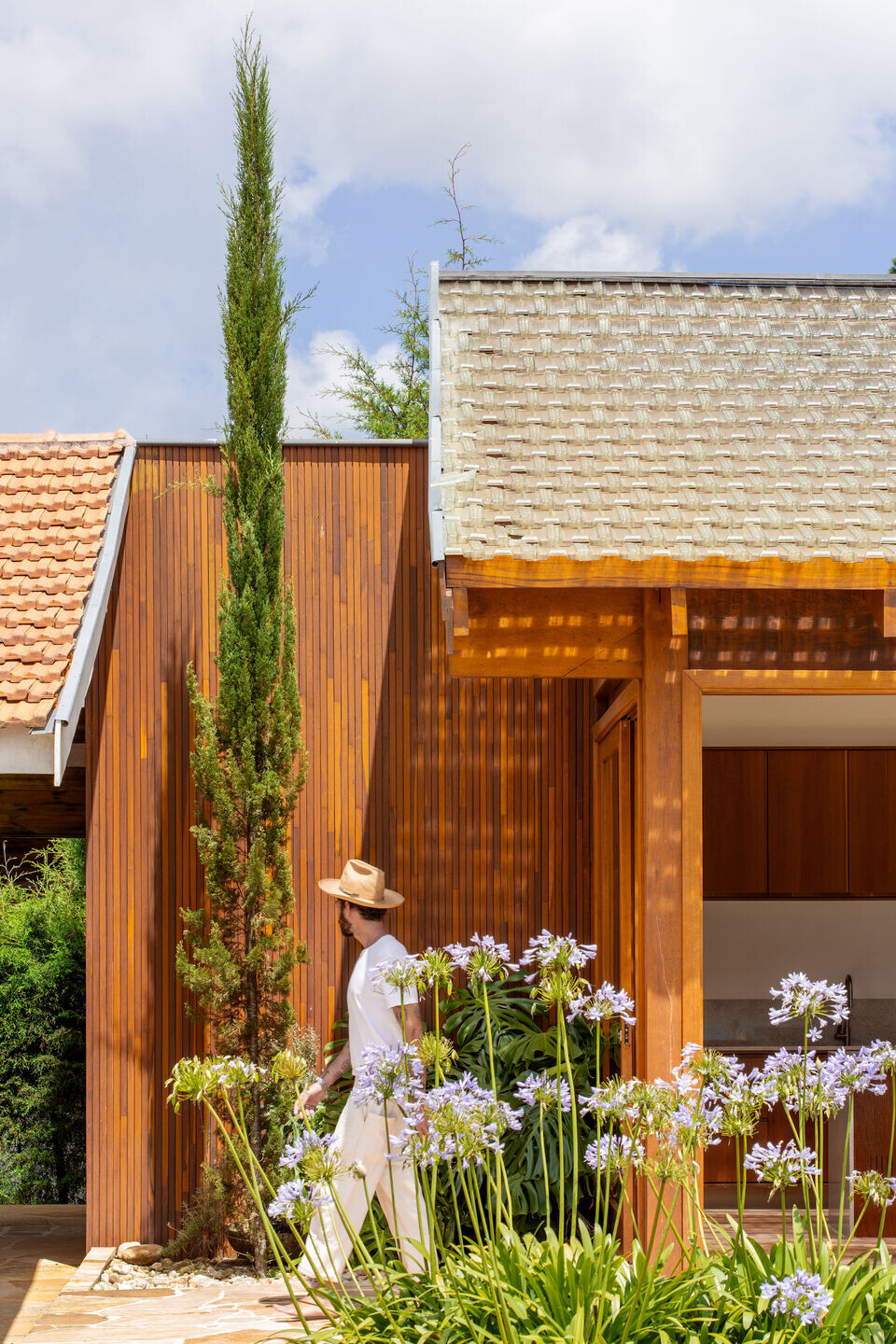

The annex program includes a kitchen with barbecue, living room, swimming pool, sauna, and bathrooms, which integrate harmoniously with the existing structure. This, in turn, underwent interventions for the modernization of the layout, to accommodate two guest bedrooms, a fireplace room, and a game room.
The uncovered terrace that extends to the outdoor area, adjacent to the tennis court, provides a subtle transition between indoor and outdoor spaces. The covered pool is fully integrated with the indoor spaces and offers a panoramic view of the surrounding landscape.

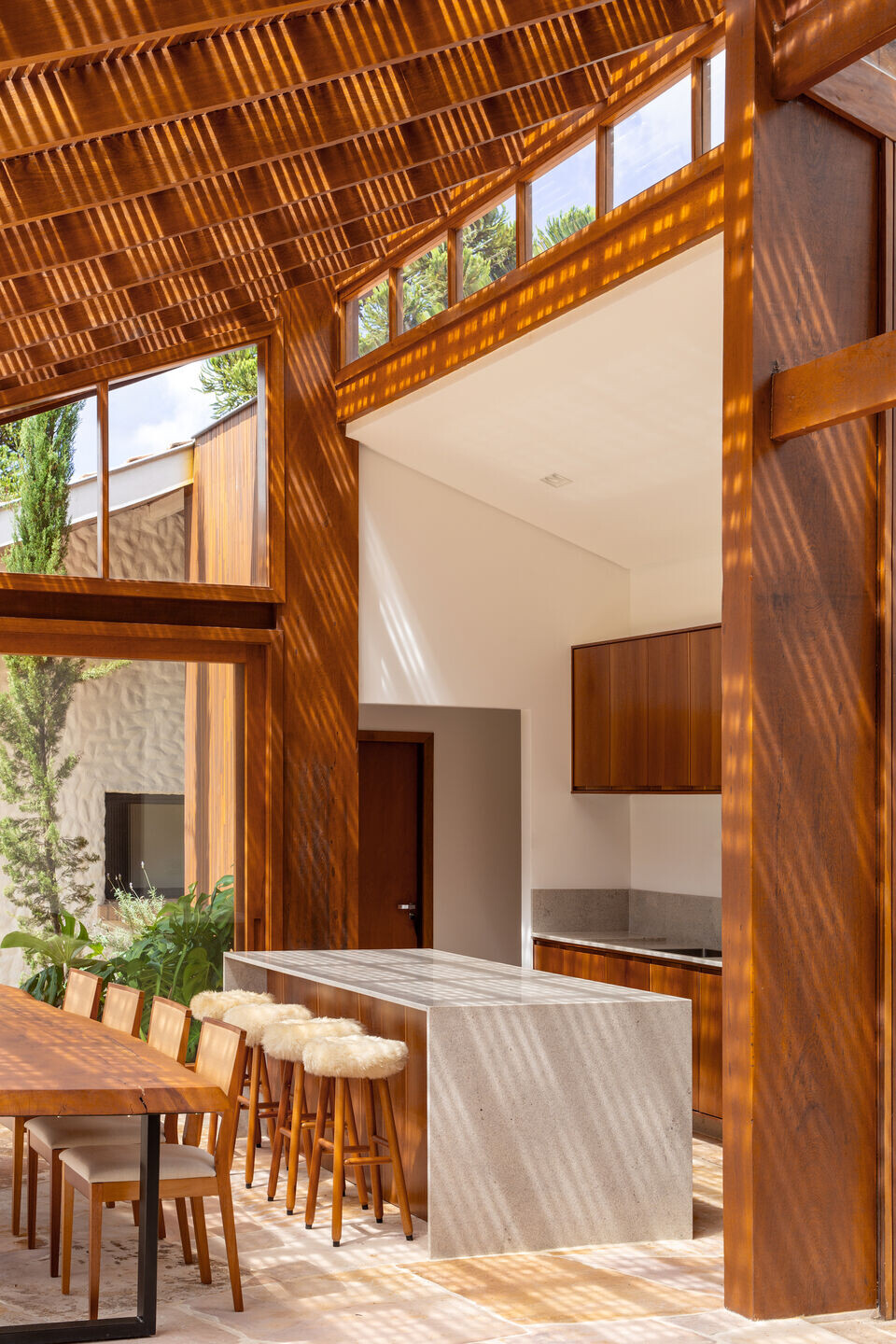
The main challenge encountered during the project was the existing unevenness between the two blocks of the original house. To overcome this, the architectural solution adopted was to divide the roof of the annex into two parts, and the ridges of the roofs of each of them are leveled with one of the roofs of the pre-existing blocks, creating a strip of natural light entry. Thus, the volumetry of the annex fits perfectly between the two blocks of the original house.

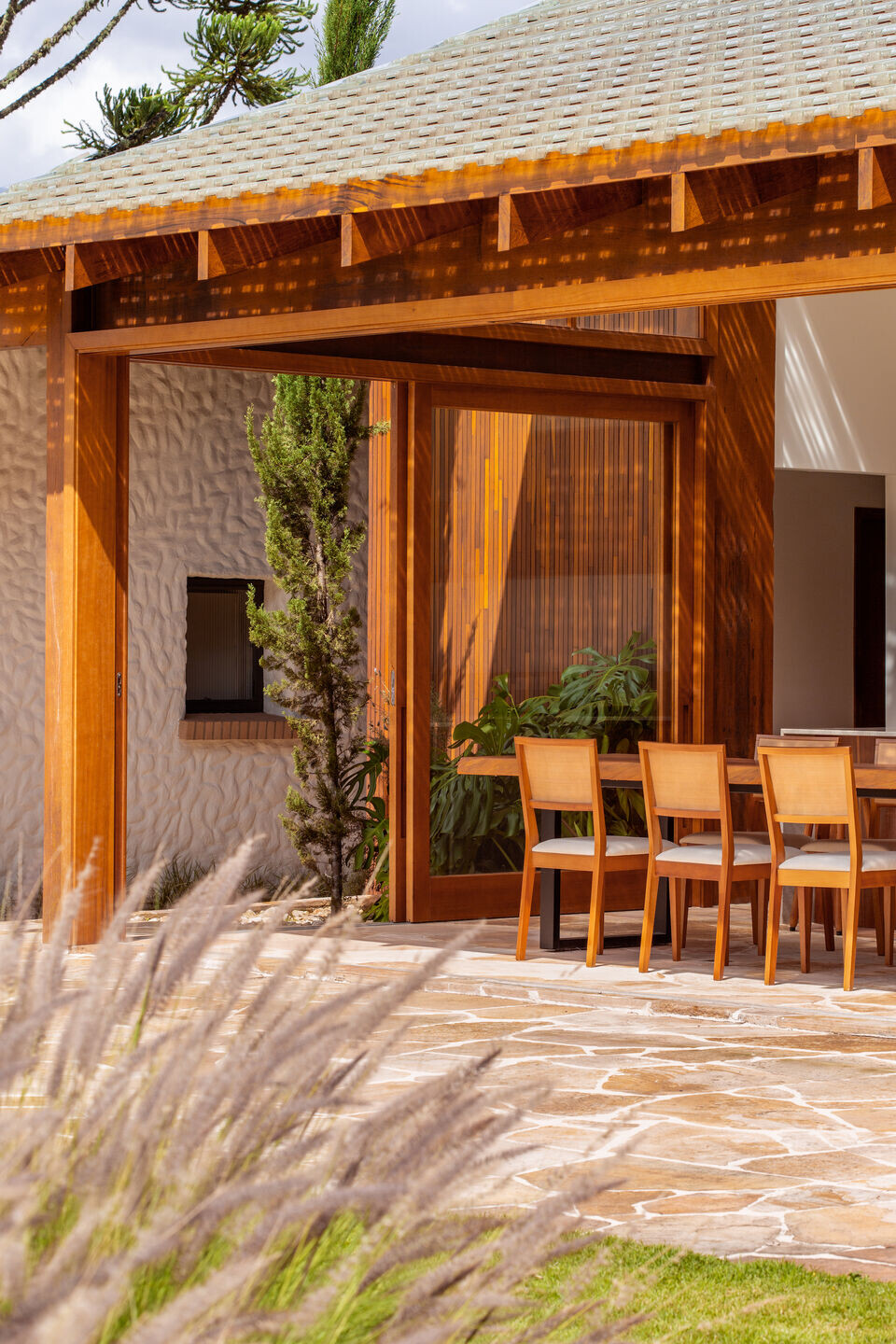
The roof, composed of glass tiles over a slatted wood lining, allows controlled but abundant entry of natural light, providing well-lit and heated environments, especially on cold days. On warmer days, the cross ventilation created from opening the doors on opposite facades brings more thermal comfort to the spaces.

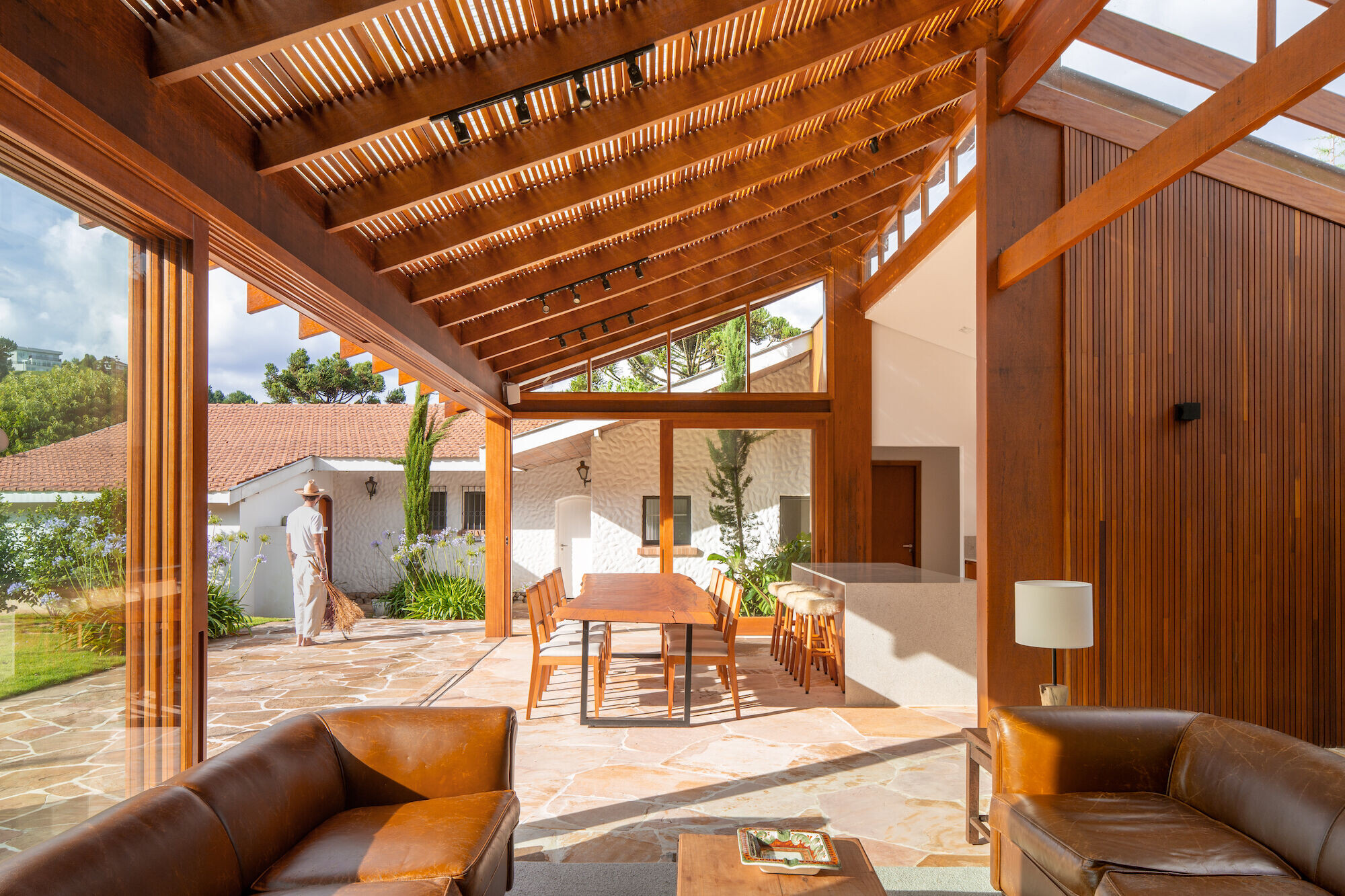
The chosen materiality also helped in creating a welcoming environment. The wooden structure of the annex, for example, not only seeks to dialogue with the surrounding constructions but also offers a contemporary aesthetic and a respectful contrast with the existing buildings. Similarly, the frames, made of the same material, bring generous integration between the interior and exterior.
The natural yellow sandstone floor complements the material palette, providing comfort for residents to walk barefoot in the living area.
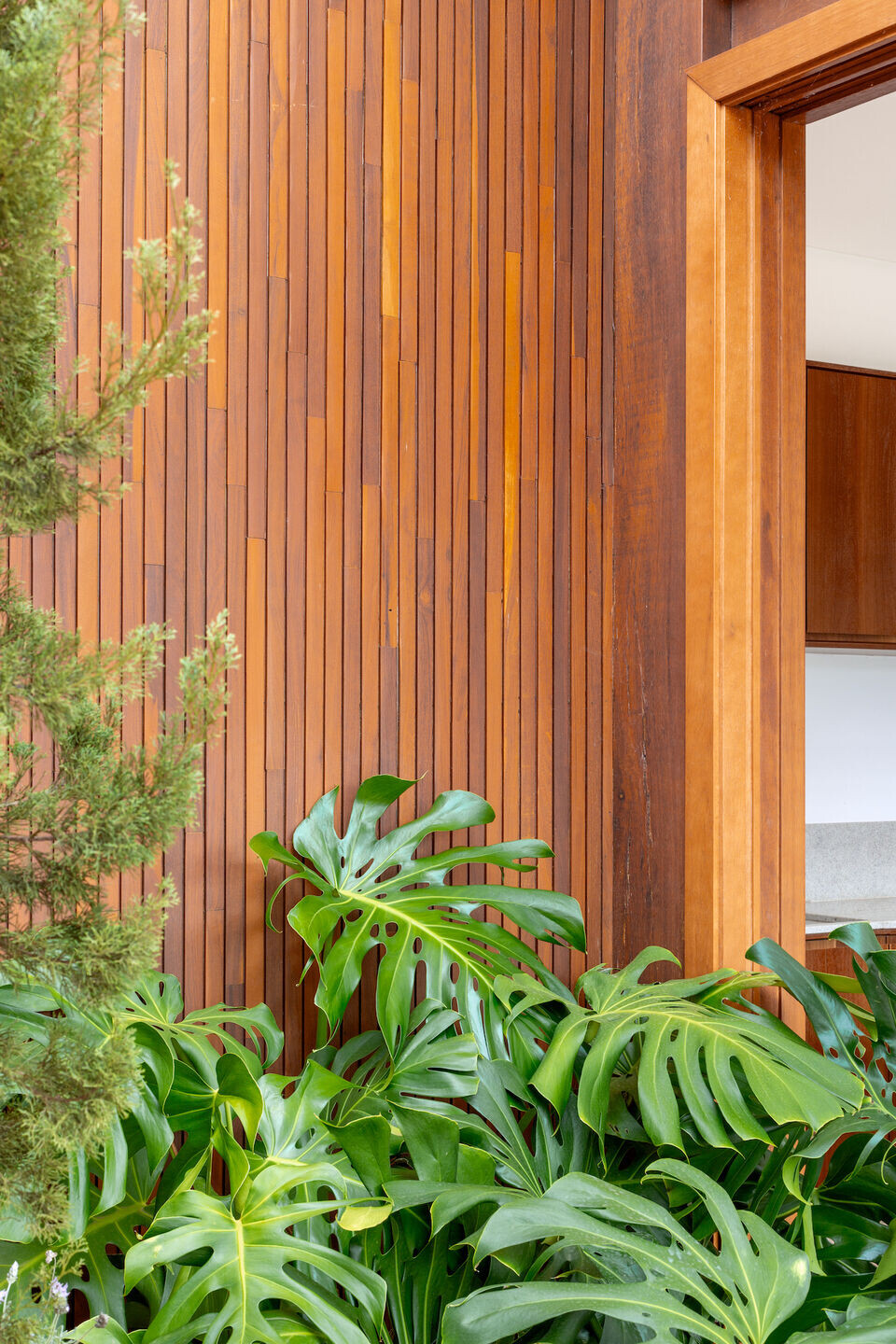

Team:
Architecture: VAGA
Authors: Fernando O'Leary, Pedro Domingues, and Pedro Faria
Collaborators: Gabriela Inomata
Photos: Carolina Lacaz
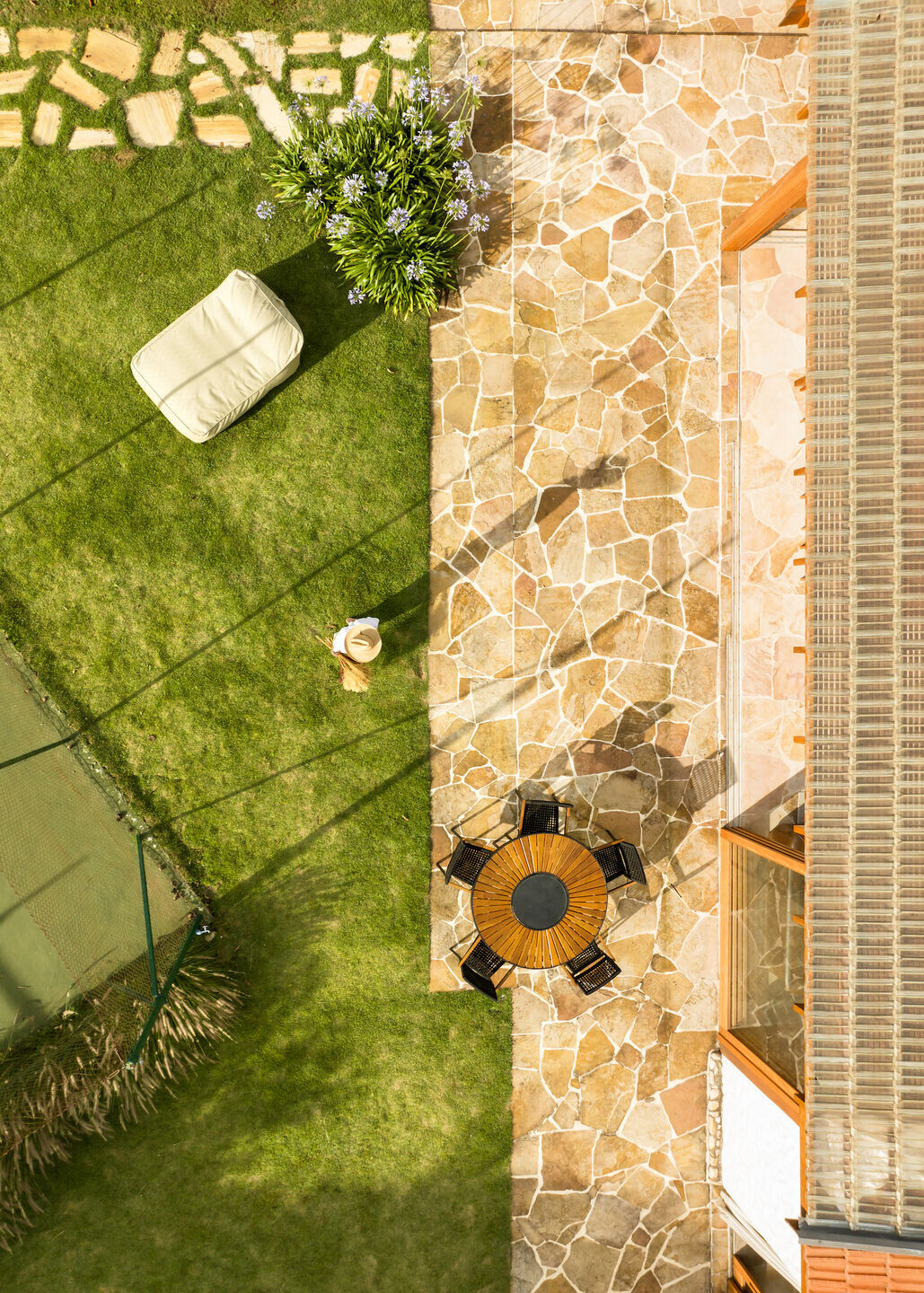
Materials Used:
Rodrigo Burla: execution
Eucaeco Madeiras: wood structure
Ulimax: wooden frames
Inartec: sandstone floor
Portobello: ceramic floors and coatings
Deca: sanitary ware and metals
Reka: lighting
Lighting Company: lighting
Evol: appliances
Cusinart: appliances
